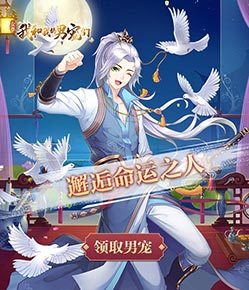印度RmKV公司的新款丝绸纱丽灵感源于18世纪皇家传统和设计
Inspired by the 18th-century royal tradition and designs, the Chennai-based RmKV has introduced the Revival Silk Saree collection for the present day brides on Kanchipuram weave.
受18世纪皇家传统设计的启发,位于钦奈的RmKV公司针对当今的新娘推出了复兴系列丝绸纱丽,该系列采用传统甘吉布勒姆织造工艺。
Last year, the company introduced the natural dye silk saree collection. The Revival collection is a continuation of that, said Shankar Kumaraswamy, Director, RmKV Silks. “We travelled throughout India and to various museums looking out for unique designs. The latest collection is an effort to revive the traditions handwoven by our master weavers,” he said.
去年,RmKV公司推出了天然染料系列丝绸纱丽。RmKV公司的董事尚卡·库马拉斯瓦米表示,复兴系列是天然染料系列的延续。他说:“我们走遍了印度,参观了各种博物馆,来寻找独一无二的设计。最新的系列是复兴织造大师传统手工艺的努力。”
The inspiration is from the rich silk heritage of the country and the beautiful designs and motifs of architectural wonders, temple walls, nature, and royal impressions giving the saree a touch of grandeur. “The Revival silk sarees are dyed naturally without any chemicals with the hues of nature, making the saree sustainable and eco-friendly,” he said.
纱丽灵感来自于印度丰富的丝绸遗产,以及建筑奇观、寺庙墙壁、皇家印象中的精美设计和图案,这为纱丽增添了一丝壮丽。“复兴系列丝绸纱丽采用天然染色,不含任何化学成分,纱丽经久耐用、天然环保。”他说。
Inspirations
灵感
On the designs, Kumaraswamy said the Kodali Karuppur saree, for example, was inspired by the 18th century Tanjore Royals. This was a blend of jamdani woven in cotton with zari, kalamkari painting with natural dyes, and black printed (border).
关于设计,库马拉斯瓦米以科达利·卡拉普尔纱丽为例,它的灵感源于18世纪的坦贾武尔皇室。该纱丽结合了在棉布上进行金丝绣的坚达尼织造技艺、天然染色的卡拉姆卡里手绘技艺和黑色印花(边饰)。
The origin of the saree can be attributed to Raja Serfoji of Thanjavur (1798-1832) who announced that a contest would take place to choose the best-woven saree to be given as a present to his queen for her birthday. RmKV has created the saree costing ₹70,000 that is adorned with betel leaf motifs in a rich forest green colour extracted from indigo overdyed with mulberry leaves. The crimson border has been dyed using lac-cross section of okra and okra plants.
纱丽的起源要归因于坦贾武尔王朝的拉贾·塞尔福吉(1798-1832),他下令举行一场比试,选出织得最好的纱丽作为生日礼物,送给他的皇后。RmKV公司设计的纱丽,价值70000卢比,饰有蒌叶图案,整体为浓浓的森林绿,该颜色提取自经桑树叶套染的靛蓝染料。深红色的边界是用秋葵和秋葵植物的紫胶横截面染色而成的。
Similarly, the Paitahani Pallu, a paithani-inspired Kancheepuram saree costing ₹70,000, brocaded with pure golden zari on a naturally-dyed body with rudraksha motifs is enclosed with a honeycomb pattern. The Mughal-inspired motifs give a unique look to the pallu and border. The saree is displayed in the Delhi National Museum and dates back to the 18th-century Mughal era, he said.
同样地,帕托哈尼·帕鲁是一款受帕托哈尼启发的甘吉布勒姆纱丽,价值70000卢比,在天然染色的纱身上,有以纯金丝绣绣出的金刚菩提图案,并用蜂窝状花纹围住。受莫卧儿王朝启发的图案赋予了纱丽和边饰独特的观感。该纱丽可追溯到18世纪的莫卧儿时代,现陈列在德里国家博物馆,库马拉斯瓦米说。
The Meenakari Patihani saree pallu with mangoes and peacocks is inspired by Mughal designs and woven with a Paithani effect in a Kancheepuram weave. It was inspired by a wardrobe piece of Maratha King Sivaji and his wife Saitamba Bai who ruled Tanjore during the 18th century, he said.
带有芒果和孔雀图案的米纳卡里·帕托哈尼纱丽灵感源于莫卧儿王朝的设计,在甘吉布勒姆编织工艺中加入了帕托哈尼效果。该纱丽的灵感来自18世纪统治坦贾武尔的马拉塔国王西瓦吉及其妻子赛坦巴·白衣橱里的服装,库马拉斯瓦米说。
The Udal Pettu silk saree costing ₹96,000 showcases the fine craftsmanship of weaving with silver and gold zari. It was inspired by the lost art of Bhujodi weaving of the 18th Century. The rust colour in the saree’s body is naturally dyed using Indian Madder, he said.
乌达尔帕图丝绸纱丽价值96000卢比,展现了金银丝绣编织的精湛工艺。该纱丽的灵感来自18世纪失传的布乔迪织造工艺。纱身的赭色是由印度茜草天然染成的,库马拉斯瓦米说。
The present day brides are conscious of the environment and are seeking unique designs, said Kumaraswamy. “With a blend of traditions and modern techniques, the Revival silk sarees make a unique offering for the wedding wardrobe,” he added.
库马拉斯瓦米表示,现在的新娘注重环保,追求独特设计。“复兴系列丝绸纱丽融合了传统和现代技术,是婚礼服装独一无二的选择。”他补充说。
作者:RAJA SIMHAN
翻译:世界丝绸网实习编辑 许奇聪
转载请注明来源和译者








 +61
+61 +86
+86 +886
+886 +852
+852 +853
+853 +64
+64


